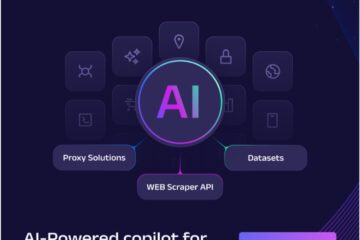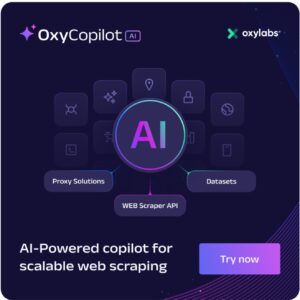Top IT Challenges and Solutions
In today’s fast-paced and technology-driven world, businesses rely heavily on their IT infrastructure to stay competitive and meet the demands of a digital landscape. However, with great technological advancements come great challenges.
In this blog post, we dive into the top IT challenges faced by organizations and explore innovative solutions to help navigate these obstacles successfully.
Cybersecurity Threats and Data Breaches:
As technology evolves, so do cyber threats. The constant risk of data breaches and cyber attacks is a significant concern for businesses. To combat this challenge, organizations need to implement a robust cybersecurity strategy that includes network monitoring, regular security assessments, employee training, and the use of advanced security tools and technologies. Additionally, adopting a proactive approach to threat intelligence and staying updated on the latest security trends is crucial.
Data Management and Privacy:
The exponential growth of data brings forth challenges in managing and protecting sensitive information. Organizations must develop effective data management strategies, including data classification, secure
storage, access controls, and data encryption. Complying with relevant privacy regulations, such as GDPR or CCPA, is essential. Implementing data governance frameworks and leveraging data analytics tools can also help extract valuable insights while ensuring data privacy.
Legacy System Modernization:
Many organizations still rely on outdated legacy systems
that are unable to keep up with modern business demands. Legacy system modernization is crucial to improve operational efficiency, enhance scalability, and support innovation. This can be achieved through careful planning, identifying areas for improvement, and adopting cloud-based solutions, virtualization, or implementing new software architectures that enable flexibility and agility.
IT Infrastructure Scalability:
As businesses grow, their IT infrastructure must be able to
scale seamlessly to accommodate increased workloads and user demands. Cloud computing offers a scalable solution, allowing organizations to dynamically allocate resources based on their needs. Embracing hybrid cloud environments, leveraging Infrastructure-as-a-Service (IaaS), and adopting containerization technologies like Docker and Kubernetes can facilitate flexible and scalable IT
infrastructure.
IT Talent Acquisition and Retention:
Finding and retaining skilled IT professionals is an ongoing
challenge. To overcome this, organizations can invest in employee development programs, provide continuous training opportunities, offer competitive compensation packages, and foster a positive work culture. Collaboration with educational institutions and promoting diversity and inclusion initiatives can
also attract top IT talent.
Business Continuity and Disaster Recovery:
Disruptions such as natural disasters, cyber attacks, or system failures can have severe consequences for businesses. Implementing robust business continuity and disaster recovery plans is essential. This includes regular data backups, redundant infrastructure, offsite storage, and conducting frequent testing and simulations to ensure readiness in case of a crisis.
IT Governance and Compliance:
Compliance with industry regulations and standards is
crucial for businesses. Establishing IT governance frameworks, adhering to
regulatory requirements, and conducting regular audits can help ensure
compliance. Implementing proper documentation, controls, and risk management
processes contribute to building a robust IT governance structure.
Legacy System Integration:
Integrating legacy systems with new technologies and
applications can be complex. Organizations should prioritize developing
integration strategies that ensure seamless communication and data flow between
systems. Employing middleware solutions, APIs, and enterprise integration
platforms can simplify and streamline the integration process.
User Adoption and Change Management:
Implementing new IT systems or technologies often requires user adoption and change management efforts. Organizations should invest ineffective communication, training programs, and user support to facilitate smooth transitions. Involving end-users in the process, addressing their concerns, and emphasizing the benefits of the new systems can foster acceptance and drive successful adoption.
IT Budget Constraints
Managing IT budgets effectively is a critical challenge for organizations of all sizes. IT departments often face the pressure of delivering innovative solutions while operating within limited financial resources. To overcome budget constraints and optimize IT investments, organizations can employ various strategies and approaches.
Prioritize Strategic Initiatives:
Aligning IT spending with the organization’s strategic
objectives is crucial. By prioritizing projects and initiatives that directly
contribute to business goals, IT departments can focus resources where they
will have the most impact. Conducting regular reviews and
assessments of IT investments helps ensure that allocated funds are utilized wisely.
Optimize IT Infrastructure:
Evaluating the existing IT infrastructure is essential to
identify opportunities for optimization and cost savings. Assessing hardware,
software, and licensing agreements can reveal areas where consolidation,
virtualization, or cloud migration can reduce costs and improve efficiency. By
leveraging scalable cloud services, organizations can also shift from capital
expenditures (CapEx) to operational expenditures (OpEx), providing greater
flexibility in managing IT budgets.
Embrace IT Cost Transparency:
Implementing IT cost transparency practices enables
organizations to gain visibility into how IT resources are utilized and their
associated costs. By establishing cost allocation models and conducting regular
financial analysis, IT departments can identify cost drivers, eliminate
unnecessary expenses, and make data-driven decisions for optimizing budgets.
Clear cost visibility also facilitates effective communication with
stakeholders about the value of IT investments.
Vendor Management and Negotiations:
Maintaining strong vendor relationships and negotiating
favorable contracts can significantly impact IT budgets. Organizations should
regularly review vendor agreements, explore competitive options, and negotiate
pricing and licensing terms. Consolidating vendors and standardizing technology
platforms can also streamline management processes and reduce costs associated
with vendor management.
Explore Open-Source Solutions:
Open-source software and technologies offer cost-effective
alternatives to proprietary solutions. By leveraging open-source solutions,
organizations can significantly reduce software licensing costs while
benefiting from active developer communities and continuous enhancements.
However, careful evaluation and consideration of support options, security, and
compatibility with existing systems are essential when adopting open-source
solutions.
Invest in IT Skills Development:
Building a skilled IT workforce is crucial for optimizing IT
investments. By investing in training and professional development programs,
organizations can enhance the capabilities of their IT teams, reducing reliance
on external consultants and support services. Developing in-house expertise
also enables organizations to better align technology investments with business
requirements, ultimately optimizing IT spending.
Implement IT Asset Management:
Proper IT asset management practices help organizations
track and optimize their technology assets’ lifecycle costs. By implementing
asset tracking systems, organizations can effectively manage software licenses,
hardware warranties, and maintenance agreements. This approach ensures that
resources are utilized efficiently, reducing unnecessary expenditures on
underutilized or redundant assets.
Continuously Monitor and Evaluate:
IT budget management should be an ongoing process. Regular monitoring and evaluation of IT expenditures, return on investment (ROI), andcost-saving initiatives enable organizations to make timely adjustments and optimize budgets. Conducting periodic IT financial reviews, benchmarking against industry standards, and seeking feedback from stakeholders ensure a proactive approach to managing IT budgets.
Sources:
The Automation Era: Challenges And Solutions For Responsible Data Usage (forbes.com)
Challenges and Solutions in Implementing AI Medical Scribes in Healthcare Systems – TechBullion
7 Top IT Challenges in 2024 (informationweek.com)
The 10 biggest issues IT faces today | CIO
How to Face the IT Industry’s Biggest Challenges Today (openit.com)











0 Comments